
The World Heritage Site in China, Sichuan Giant Panda Sanctuaries, covers more than 2,284,489 acres and is home to more than 150 giant pandas like this cute giant panda cub. Photo #1 by Insane Wallpapers
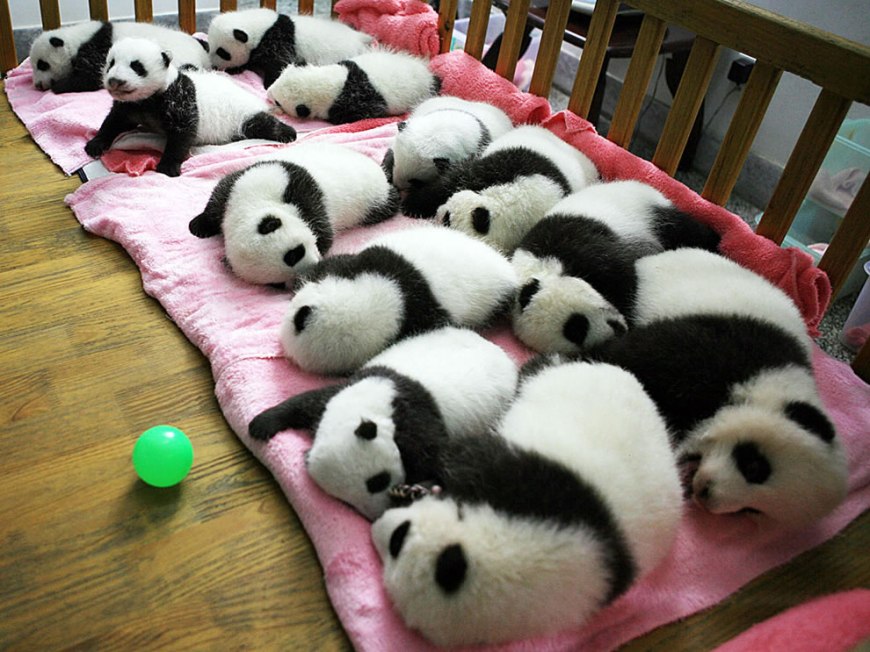
12 panda babies in a crib. The Sichuan Giant Panda Sanctuaries contain one of the most important captive breeding sites for giant pandas. A panda cub is born pink, blind, and toothless. After a week or two, the skin turns gray. At a month old, the cubs are covered in fluffy black and white fur. Each of these panda cubs will weigh 100 pounds by the time they celebrate their first birthday. Photo #2 by n24

16 pandas at Wolong National Nature Reserve, a part of the Sichuan Giant Panda Sanctuaries. Some statistics claim that of the 1,590 giant pandas left living in the world, more than 300 live in zoos, breeding centers and research areas. Most “wild” pandas live in China. Photo #3 by Anna

Rough life for napping giant panda in Sichuan Province, China. Photo #4 by mega-tapety

Cute juvenile hanging out in a tree, but panda cubs start climbing trees when they are only six months old. Photo #5 by Martha de Jong-Lantink

Up close to a seven-month-old panda cub in the Wolong Nature Reserve in Sichuan, China. Photo #6 by Sheilalau

Roundup of 17 giant panda cubs at Sichuan Giant Panda Sanctuaries. On May 12, 2008, a catastrophic earthquake devastated the Chinese panda sanctuaries which included the Panda Research Center. Five security guards were killed and six pandas escaped. On May 20th, two of the giant pandas were found but they had been injured during the earthquake. On June 9, nine-year-old Mao Mao, a mother of five at the breeding center, was discovered; her body had been crushed by a wall in her enclosure at the Wolong National Nature Reserve. Photo #7 by china-attractions
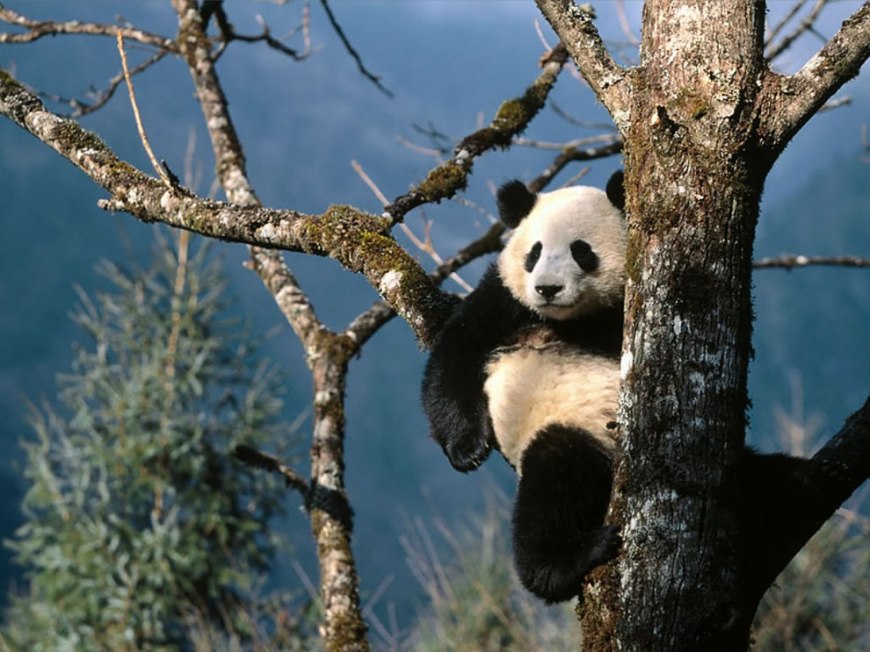
Trees are natural recliners for the giant panda. Photo #8 by Wallpaper Pimper

Closeup of playful panda at the Chengdu Research Base which studies giant panda breeding. Photo #9 by Prince Roy

Momma and baby endangered giant pandas at the ‘captive cages’ portion of the research center. Photo #10 by look
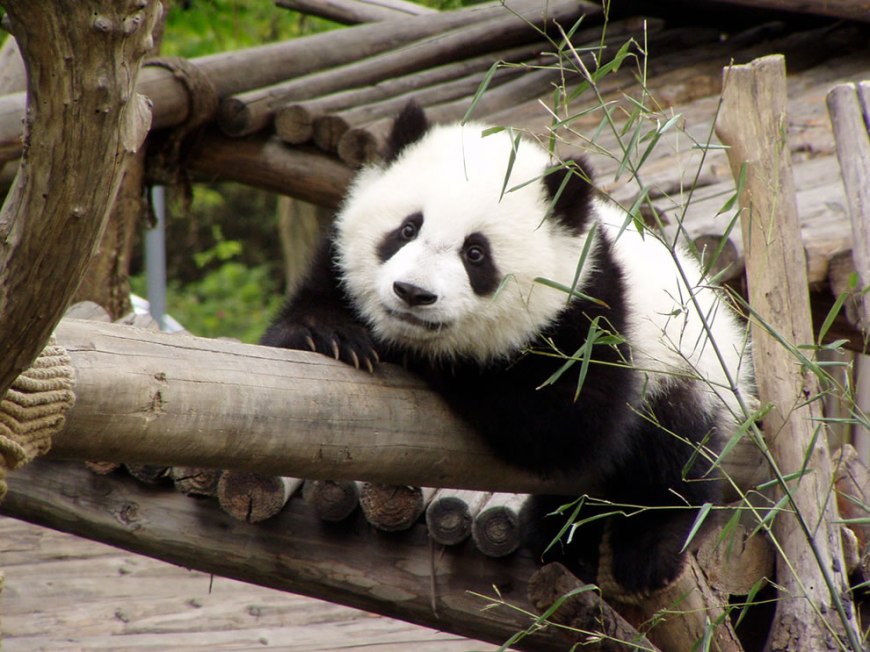
The giant panda’s paw has five fingers and a “thumb” which help in climbing and eating bamboo. Photo #11 by johey24
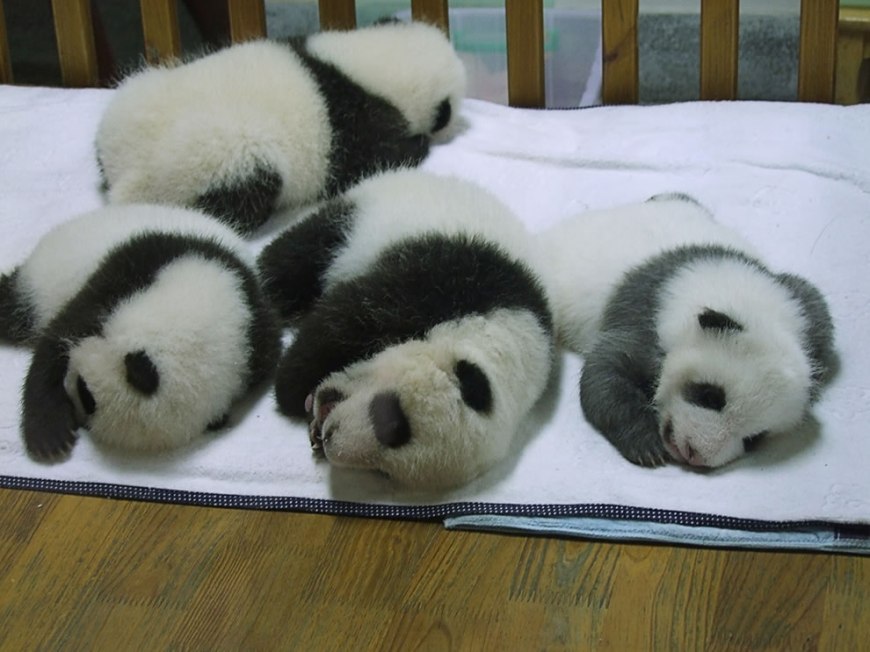
Taken at Sichuan Giant Panda Sanctuary, China. At birth, the giant panda weighs about 3 1⁄2 to 7 ounces (100 – 200 grams) and measures about 6 to 7 inches long (15 to 17 centimeters) long. Photo #12 by Phil Parsons
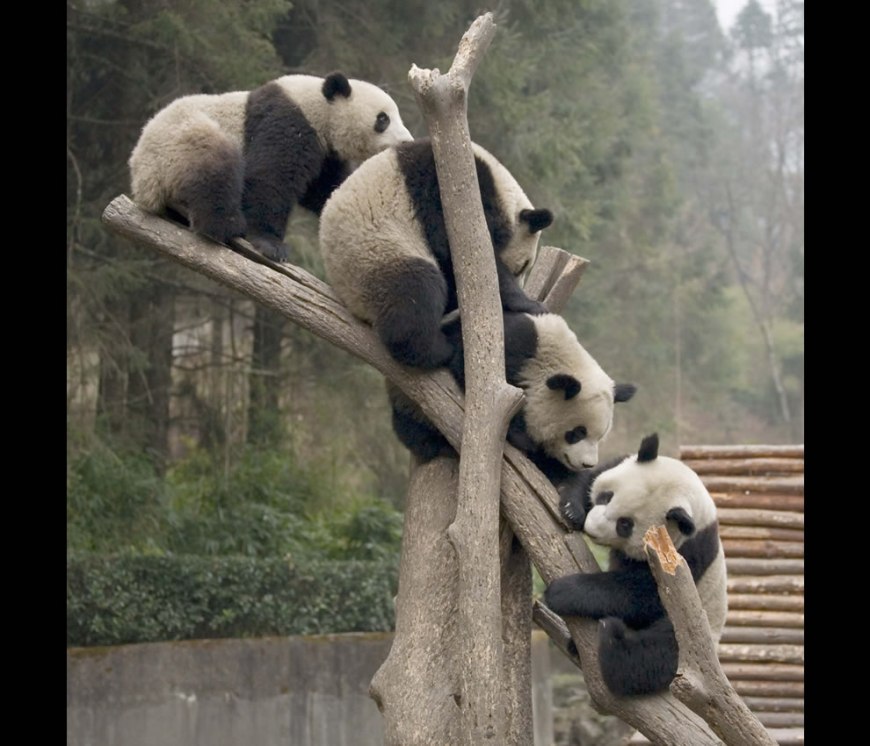
Four giant pandas climbing and sharing a tree at Wolong National Nature Reserve. Photo #13 by Chi King

The bamboo-eating giant panda is one of the most iconic endangered species. The Sichuan Giant Panda Sanctuaries cover an area bigger than 2 million acres, includes seven nature reserves and nine scenic parks within the Qionglai and Jiajin Mountains. Photo #14 by mota
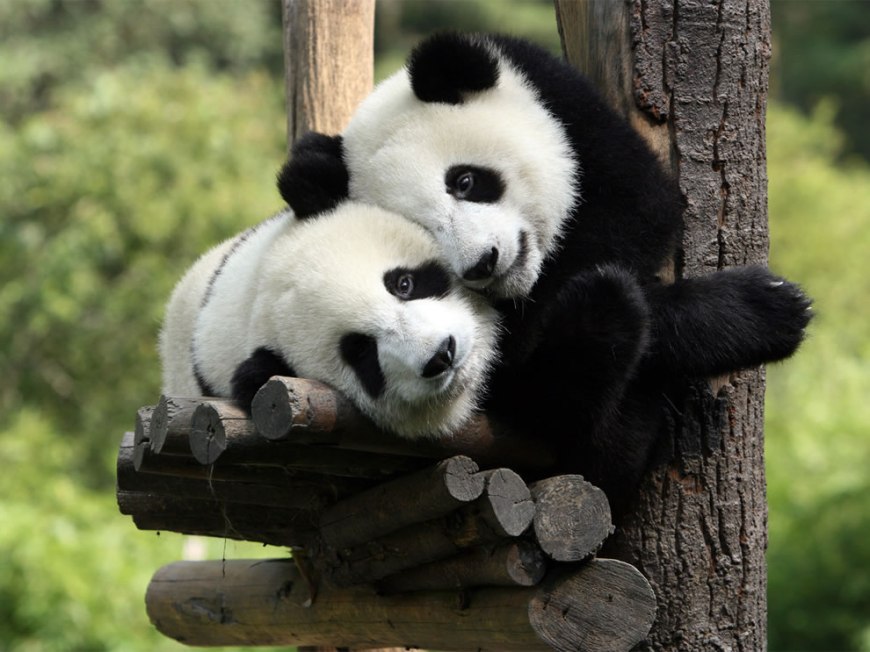
Giant Pandas cuddling at Wolong. Photo #15 by xn
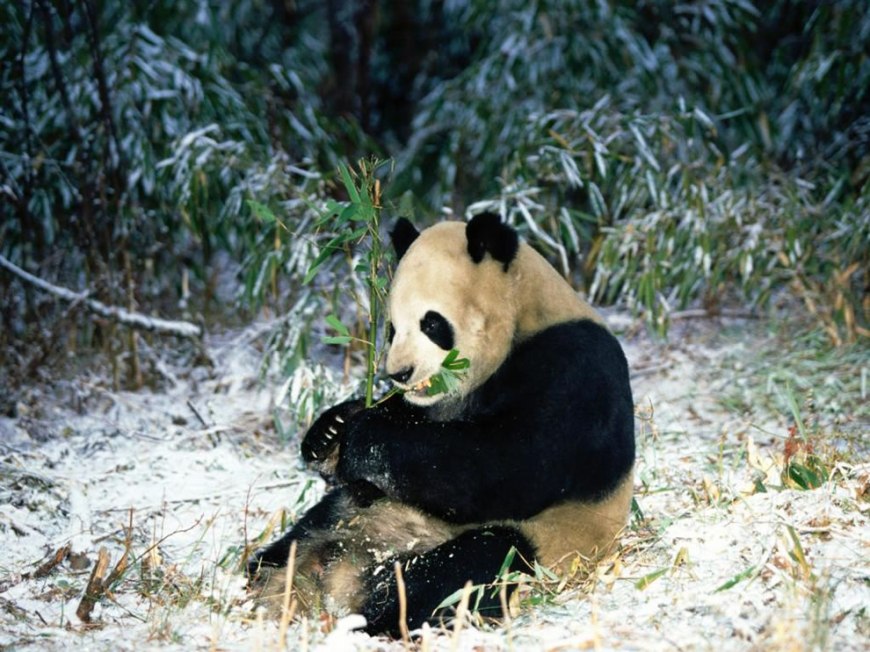
The average giant panda eats as much as 20 to 30 pounds (9 to 14 kg) of bamboo shoots every day. Photo #16 by kewl wallpapers
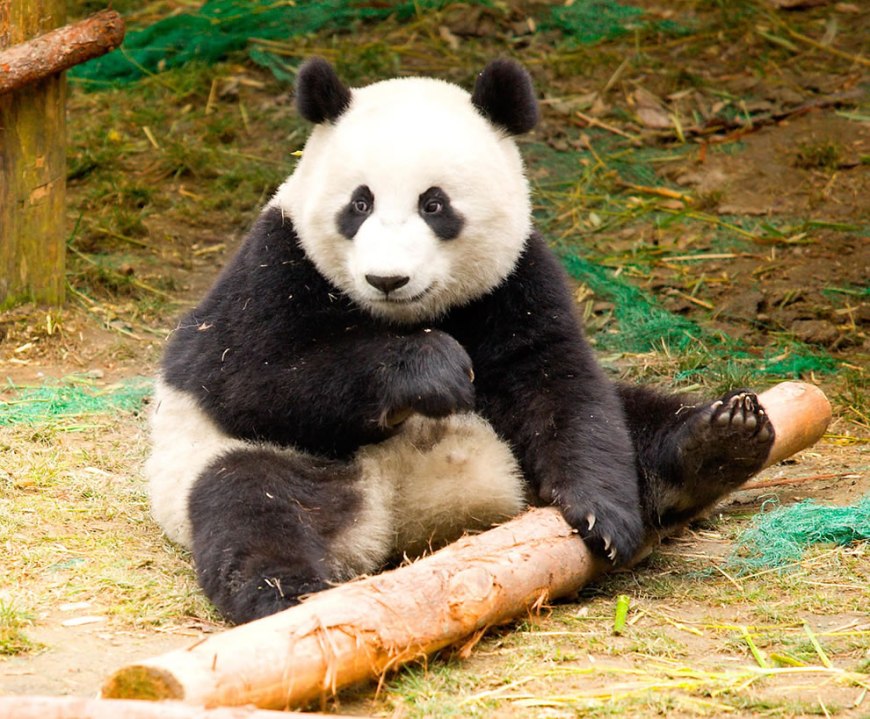
Young panda at Wolong — World Heritage Site. When fully grown, adult pandas measure about 4 to 6 feet long (1.2 to 1.8 meters) which includes their tail. Photo #17 by Chi King

Trio of juvenile pandas at Wolong. On average, giant pandas weigh in at 220 to 250 pounds (100 to 115 kilograms). Male pandas can weigh as much 350 pounds. The weight of female pandas vary between 170 to 220 pounds. Photo #18 by Chi King

Playful teenage giant pandas at UNESCO World Heritage Site in China. Photo #19 by johey24

Panda’s at Wolong National Nature Reserve after the 2008 earthquake as a black and white matching kitty watches, screaming, apparently also wanting some milk. Photo #20 by Katie & #21 by Katie
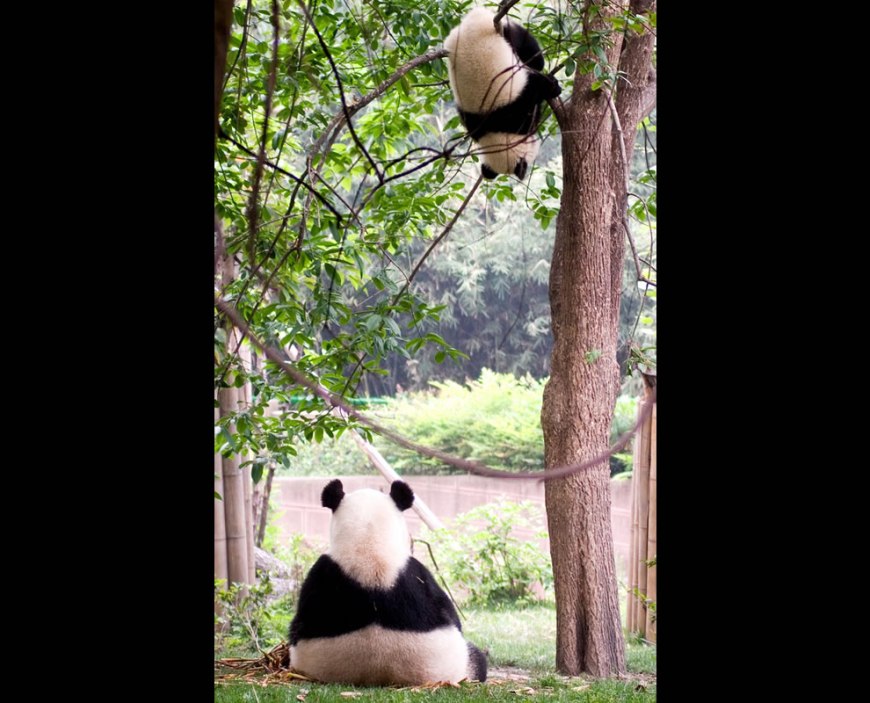
A different take on the world, giant pandas at Chinese sanctuary. Photo #22 by Juha Riissanen
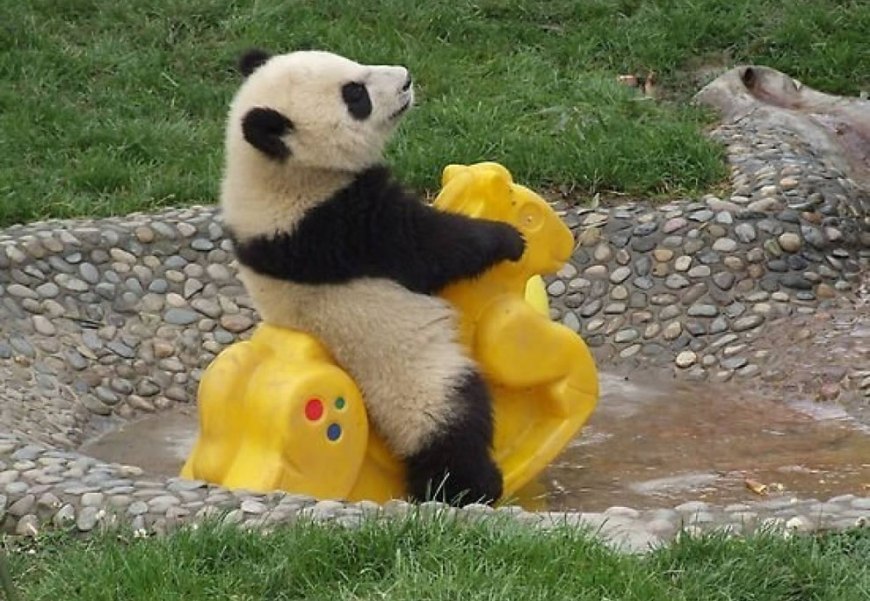
Baby panda rides a toy in the water pond at the sanctuary. Photo #23 by webtalk

A 20 year old giant panda bear munching on an apple at the Chinese park. The giant panda lives for about 20 years in the wild and up to 30 years in captivity. Photo #24 by Swamibu
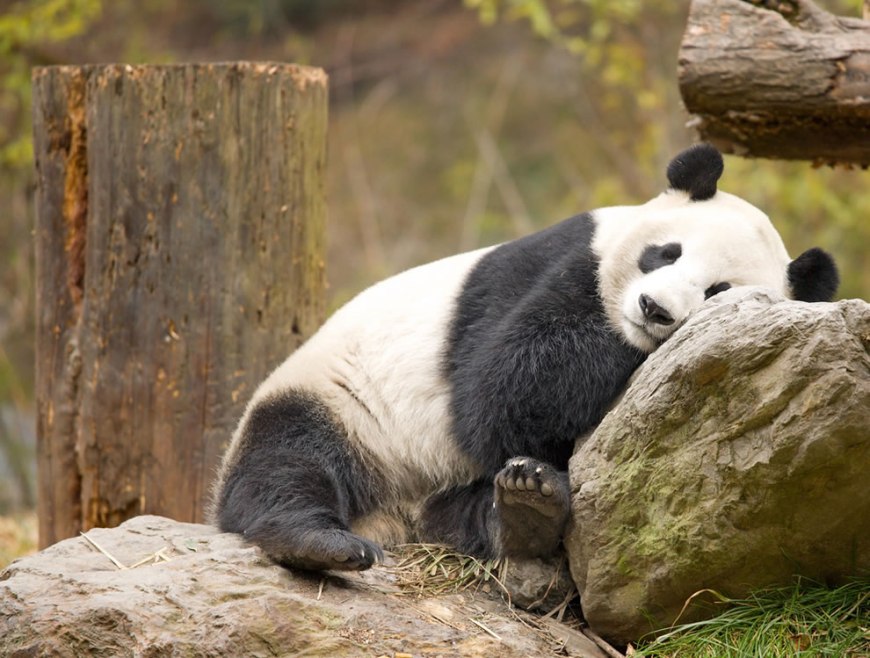
Giant Panda intent upon sleeping at Wolong, Sichuan, China. Photo #25 by Chi King
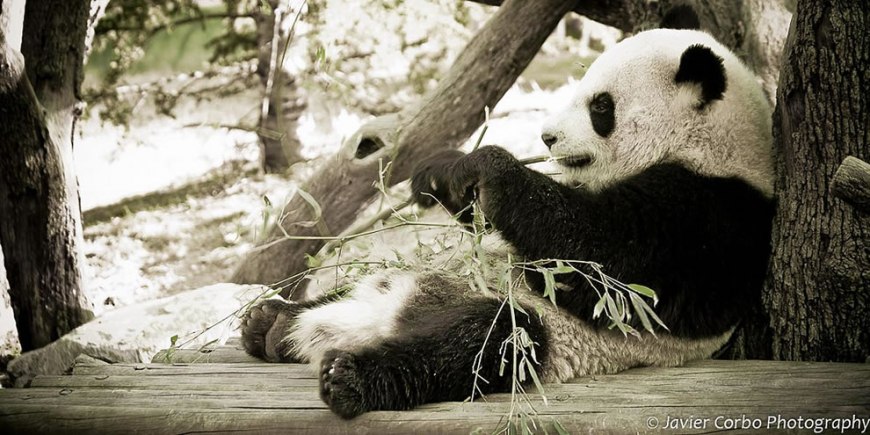
Due to farming, deforestation and other development, the giant panda has been driven out of the lowland areas where it once lived. Photo #26 by Javier Corbo
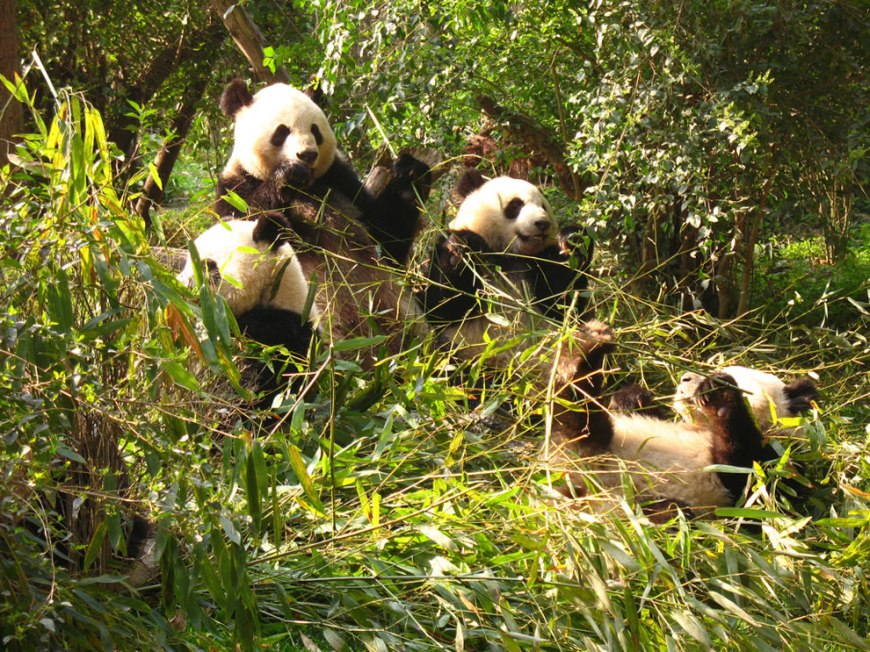
Group of giant pandas eating and playing at Sichuan Giant Panda Sanctuary. Photo #27 by Tim Adisa
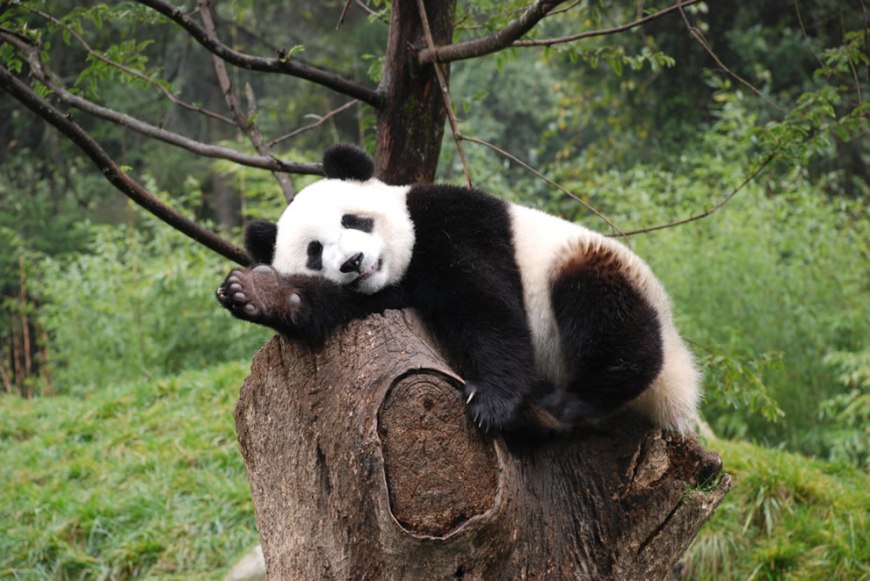
Natural posers, natural sleepers, giant panda at Wolong Nature Reserve. Photo #28 by Blake Lennon

Seven giant panda cubs snoozing together at Wolong, China. According to Wikipedia, “Initially the primary method of breeding giant pandas in captivity was by artificial insemination, as they seemed to lose their interest in mating once they were captured. This led some scientists to try extreme methods such as showing them videos of giant pandas mating and giving the males Viagra. Only recently have researchers started having success with captive breeding programs.” Photo #29 by wallpedia

While highly endangered pandas like this big fella are the most famous and sought after to be seen, the Sichuan Giant Panda Sanctuaries in China are also home to other globally endangered animals such as the red panda, the snow leopard and the clouded leopard. Photo #30 by Phil Parsons
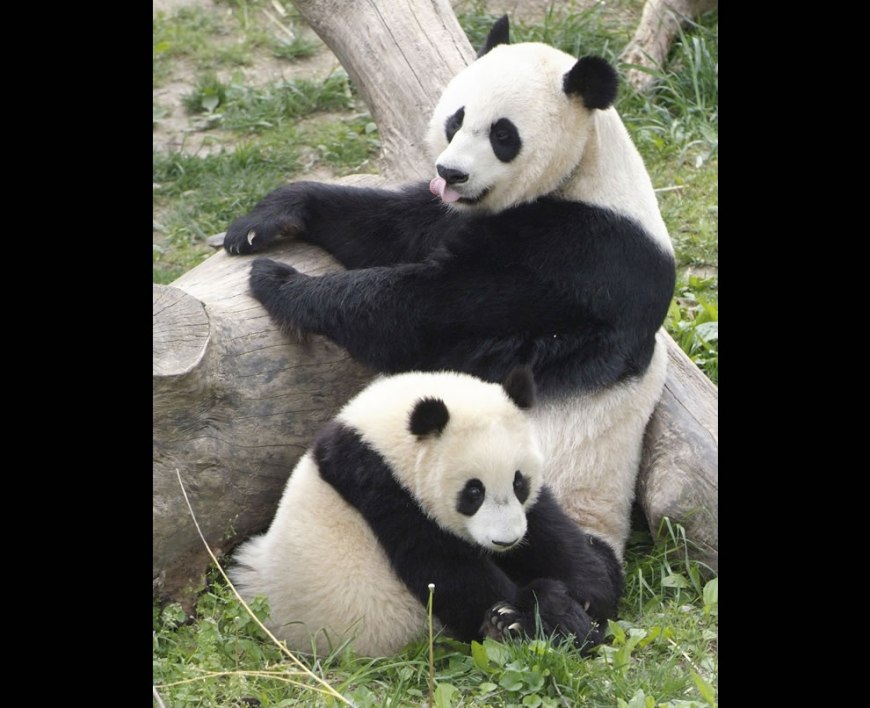
The panda is believed to have first appeared 2 to 3 million years ago. Momma and baby at UNESCO World Heritage Site. Photo #31 by World’s Most Amazing Things
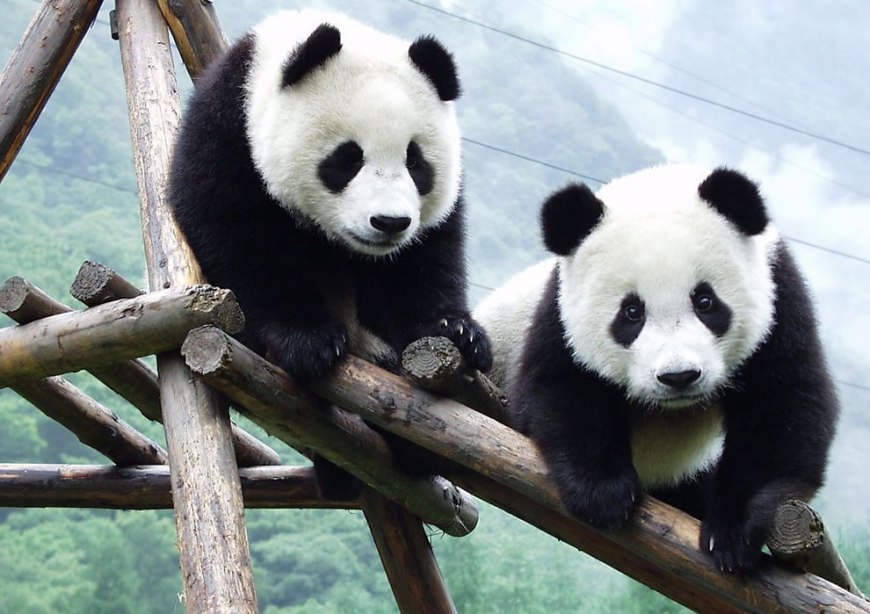
Did you know: In 1869 “it was a French missionary, Armand David, who let the whole world know of this unique creature in China.” Photo #32 by World’s Most Amazing Things

This mother and cub pair is at Wolong National Nature Preserve, a part of the Sichuan Giant Panda Sanctuaries. The Wolong center has two types of ‘accommodations’ for giant pandas – the Captive Cages and the Semi-nature Enclosures. Photo #33 by rad studio
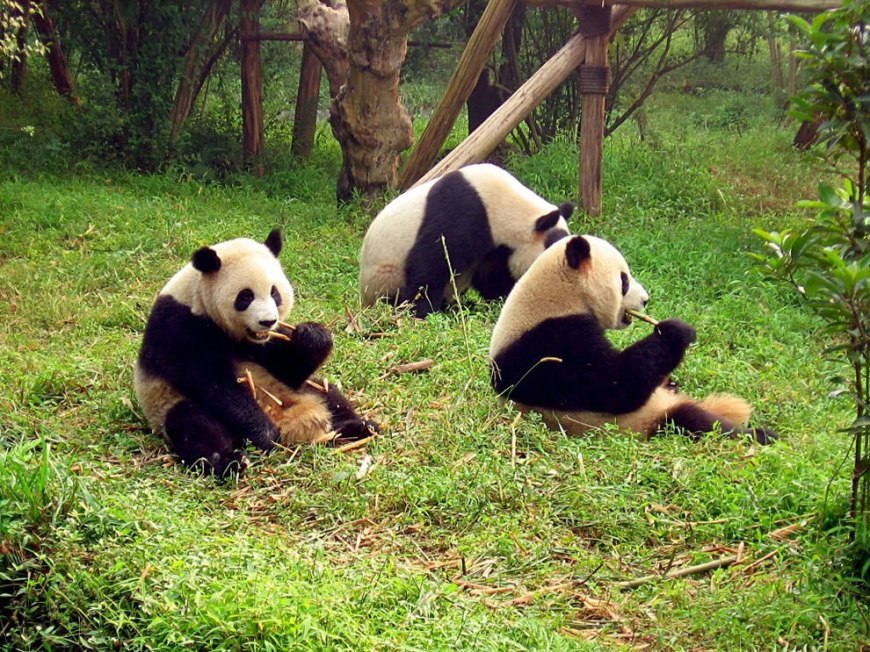
Ailuropoda melanoleuca the giant panda’s scientific name means, “black and white cat-footed animal.” These three are munching on bamboo at Chengdu’s Giant Panda Breeding Research Base. Photo #34 by Colegota
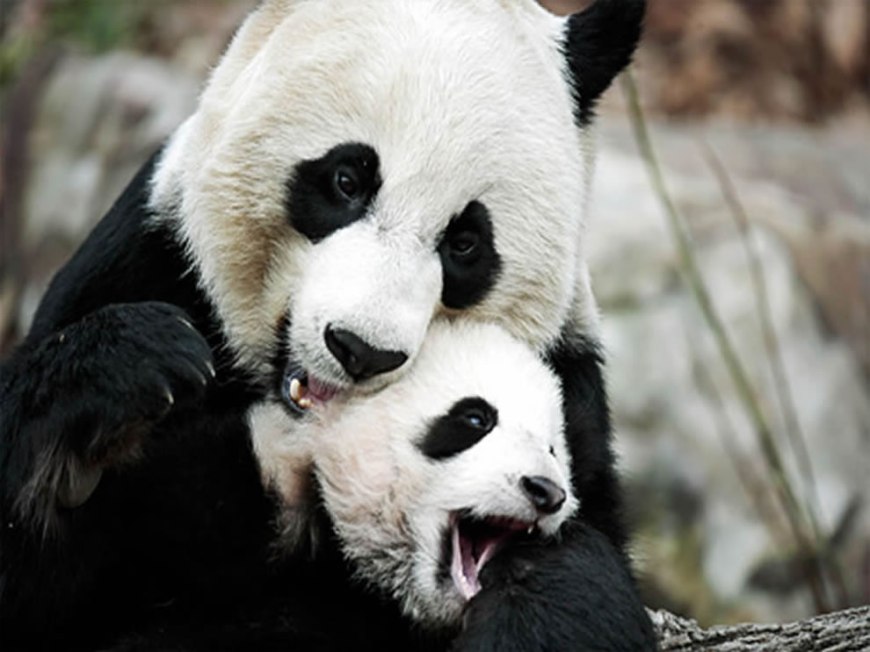
Giant pandas snuggling at Wolong. The female giant panda gives birth between 95 and 160 days after mating. Out in the “wild,” without human intervention, only one of the two panda cubs born to each mother will survive. The giant panda cubs stay with their mothers for up to three years which means a wild female may successfully raise only five to eight cubs in her lifetime. Photo #35 by wallpaper i
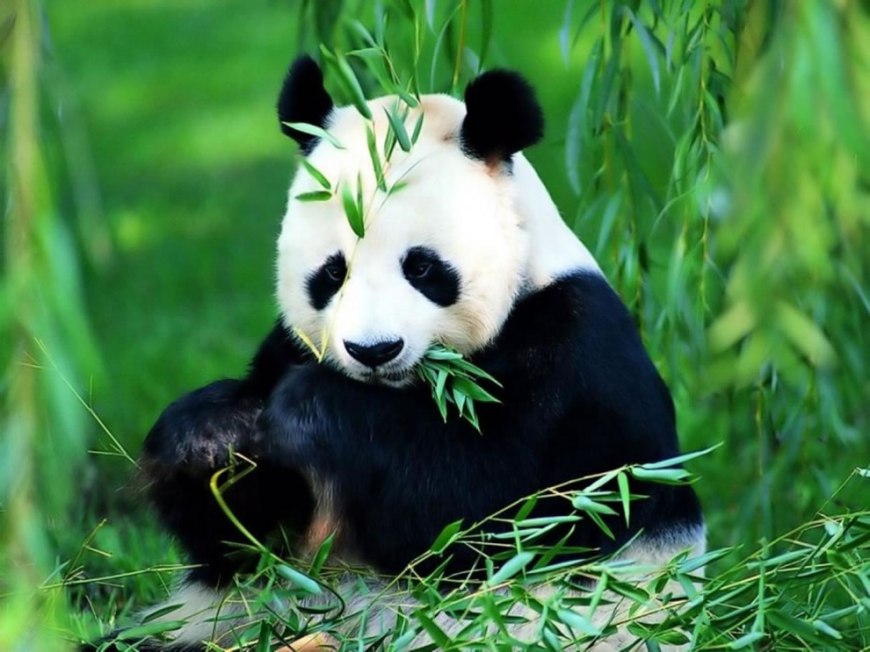
Lunch time at Wolong National Nature Reserve. A panda either sits or lies down to eat. Wild pandas spend most of their day resting, feeding, sleeping, or seeking food. But unlike other bears from temperate climates, giant pandas do not hibernate. Photo #36 by WallpaperHD
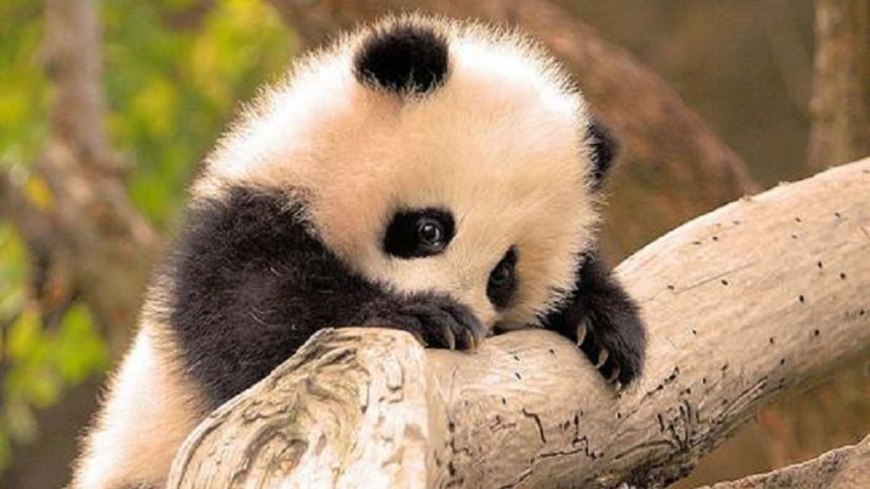
Have you ever heard a panda? The Smithsonian has recordings so you can listen to the panda at ages newborn, three months old and adult. Photo #37 by Desktop Nexus
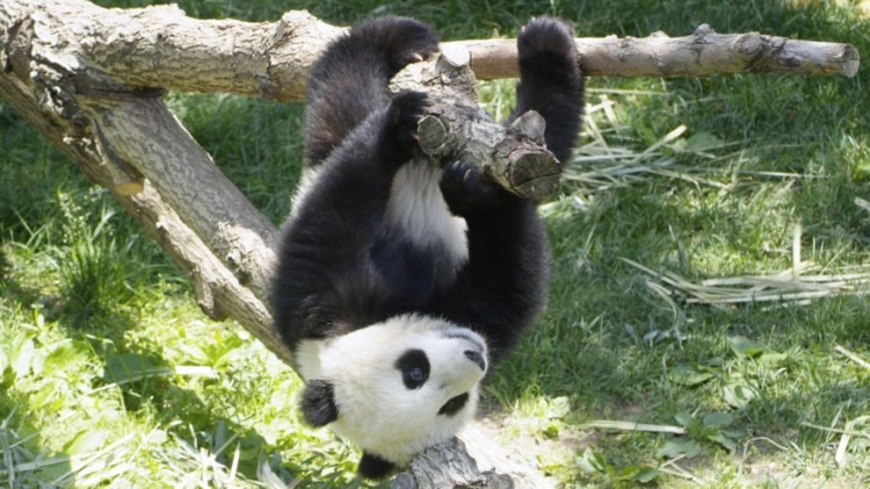
Juvenile giant panda just hanging around at Wolong Nature Reserve in Sichuan, China. Photo #38 by Desktop Nexus

Panda conservation started during the 1940s in China. In 1963, the Chinese government created Wolong which now has about 100,000 visitors every year. According to research study in 2001, by Dr. Jianguo Liu, “The rate of destruction is higher after the reserve’s creation than before its creation. Using NASA’s satellite images and records of population, Liu’s research team concluded that due to tourism and the increase in local population, the reserve is facing an unprecedented threat. ‘Tourists don’t think they have an impact on panda habitat, but indirectly each visitor has some impact. We don’t see ourselves as a destructive force, but we are.’ Liu said.” Photo #39 by Desktop Nexus
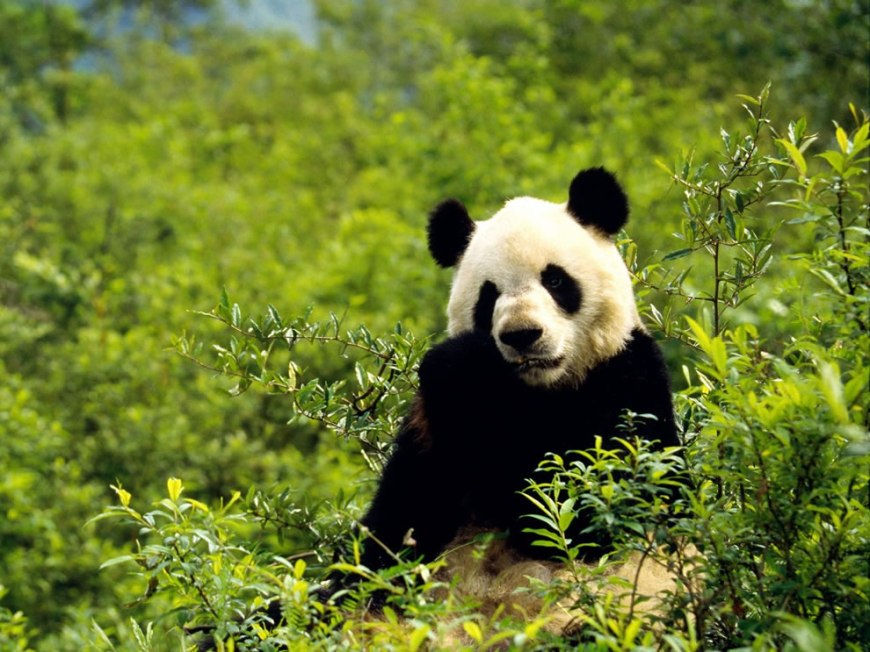
Although researchers report “pandas living in groups of 2 to 28 individuals, pandas are generally thought to be solitary animals.” Photo #40 by wallpaper seek
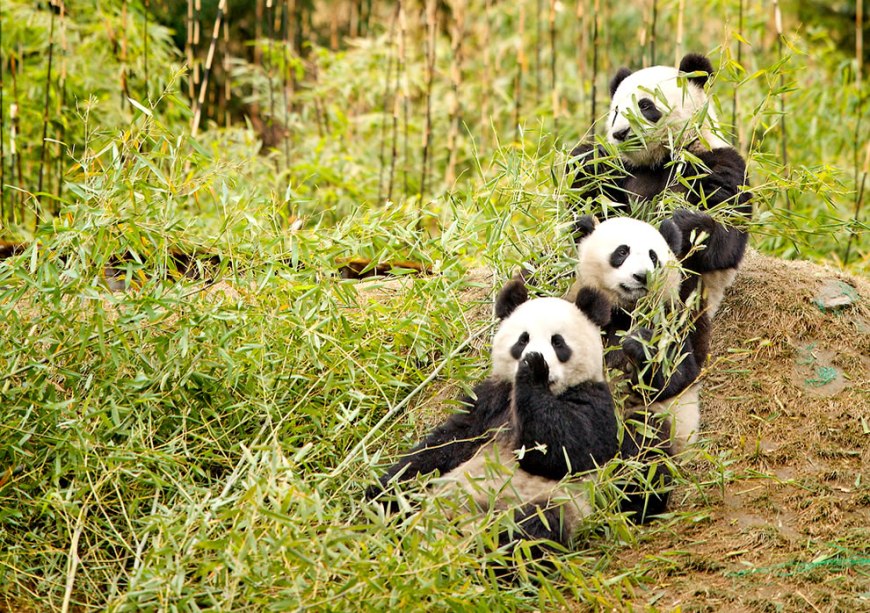
A 2006 New York Times article claimed that giant pandas kept in a zoo “costs five times more than that of the next most expensive animal, an elephant. American zoos generally pay the Chinese government $1 million a year in fees, as part of a typical ten-year contract.” If the fee can’t be paid, the pandas go back to China and the Sichuan Giant Panda Sanctuaries. Photo #41 by Chi King

Smile and have a great day! Photo #42 by Desktop Nexus
These beautiful pandas area sight to behold. It’s a terrible thing that they are endangered animals.
Thank you so much for the fantastic photos of these amazing creatures. They truly are a sight to behold.
Geri bildirim: A Mother’s Love: 40 Adorable Animal Mom and Baby Photos
Yes, they are real cute before they learn Kung Fu.